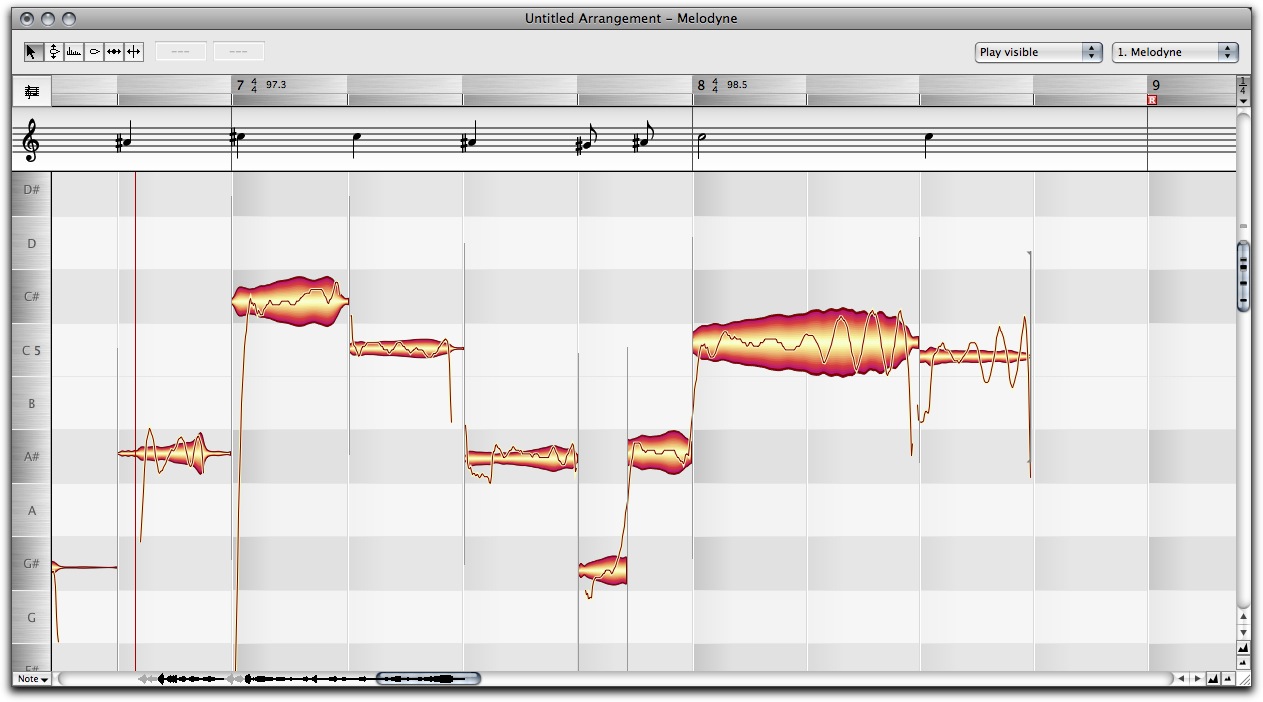|
|
| 
|
Celemony
Melodyne Editor

Melodyne editor is the first Celemony product to offer the
Direct Note Access (DNA) technology. This makes possible what
had previously been considered impossible: access to individual notes in
polyphonic audio material. Melodyne editor is an ideal choice for the
optimization of lead vocals, too. Under Mac OS and Windows, as a plug-in and
stand-alone application.
Features:
-
Single-track audio editing environment with Melodyne technology.
-
Suitable for monophonic, polyphonic and rhythmic/complex audio material.
-
Offers with DNA direct access to individual notes within chords.
-
Works as a plug-in (VST, AU, RTAS) in compatible DAWs under Mac OS X and
Windows.
-
Supports 32-bit and 64-bit.
-
Can also be used in stand-alone mode.
-
Activation on up to two computers or via iLok.
-
User interface and manual in English, German, French, Spanish and
Japanese.
Applications:
-
Manual or automatic correction of intonation and timing errors.
-
Refashioning of melodies, harmonies, timing and rhythm.
-
Transposition including adjustment to scale.
-
Modifying various note parameters such as volume, vibrato, formant
spectrum.
-
Pitch shifting and time stretching.
-
(re-)quantization.
-
MIDI file export.
Editing Possibilities for Monophonic and Polyphonic Material
In the case of monophonic (solo voice, saxophone, bass guitar, etc.) and
polyphonic (piano, guitar, etc.) audio material, the following possibilities
exist for editing notes:
-
Modifying the pitch.
-
Modifying the pitch drift.
-
Modifying the pitch modulation.
-
Modifying the position.
-
Modifying the length.
-
Modifying the volume.
-
Shifting the formant spectrum.
-
Modifying the pitch of any transition between notes.
-
Modifying the volume of any transition between notes.
-
Shifting the formant spectrum of any transition between notes.
-
Timing (re-)quantization, manually or via macro.
-
Pitch quantization, manually or via macro.
-
Cut, copy and paste.
If, in the case of polyphonic material, two or more instruments play a note
of the same pitch on the same beat, one note only, representing the combined
sound of the instruments in question, is available for editing (no separation
of instruments).
Editing Possibilities for Rhythmic and Complex Material
In the case of rhythmic and complex material, separation is according to
beats, so if several notes (e.g. click and snare) sound on the same beat, they
are available for editing in the shape of a Melodyne blob. For such blobs, the
following editing possibilities exist:
-
Modifying the pitch (relative).
-
Modifying the position.
-
Modifying the length.
-
Modifying the volume.
-
Shifting the formant spectrum.
-
Modifying the volume transition between blobs.
-
Shifting the formant spectrum of transitions between blobs.
-
Timing quantization, manually or via macro.
-
Cut, copy and paste.
|
| |
|

